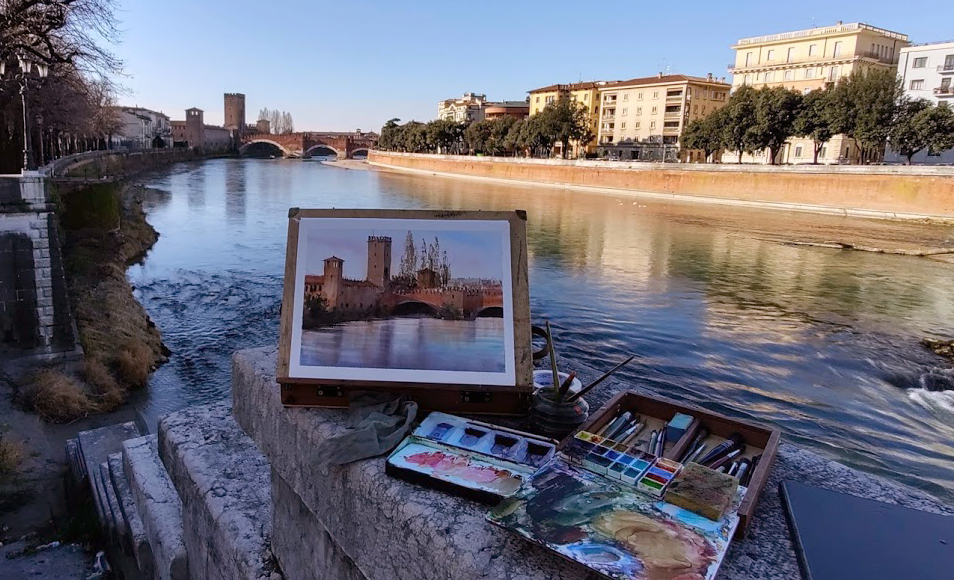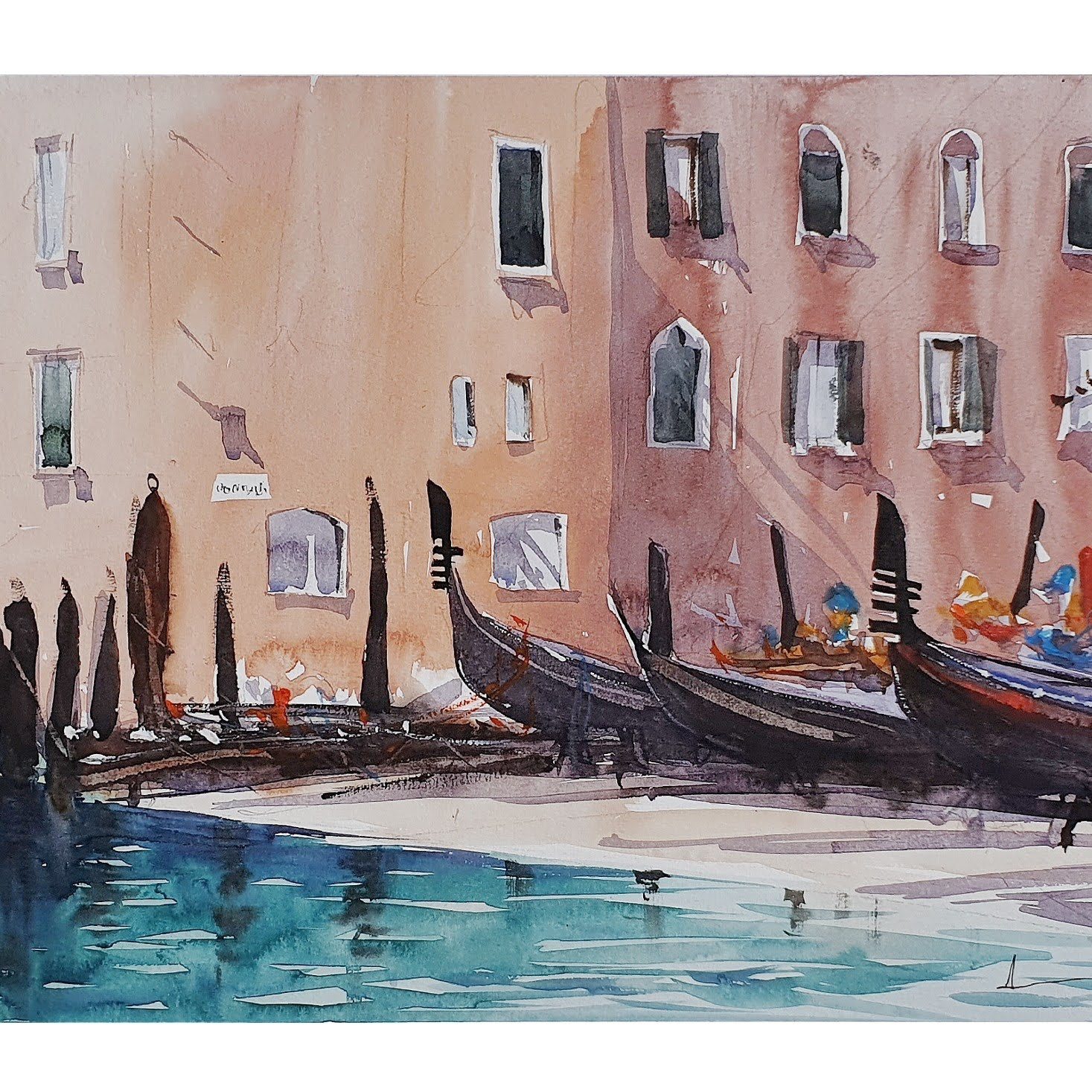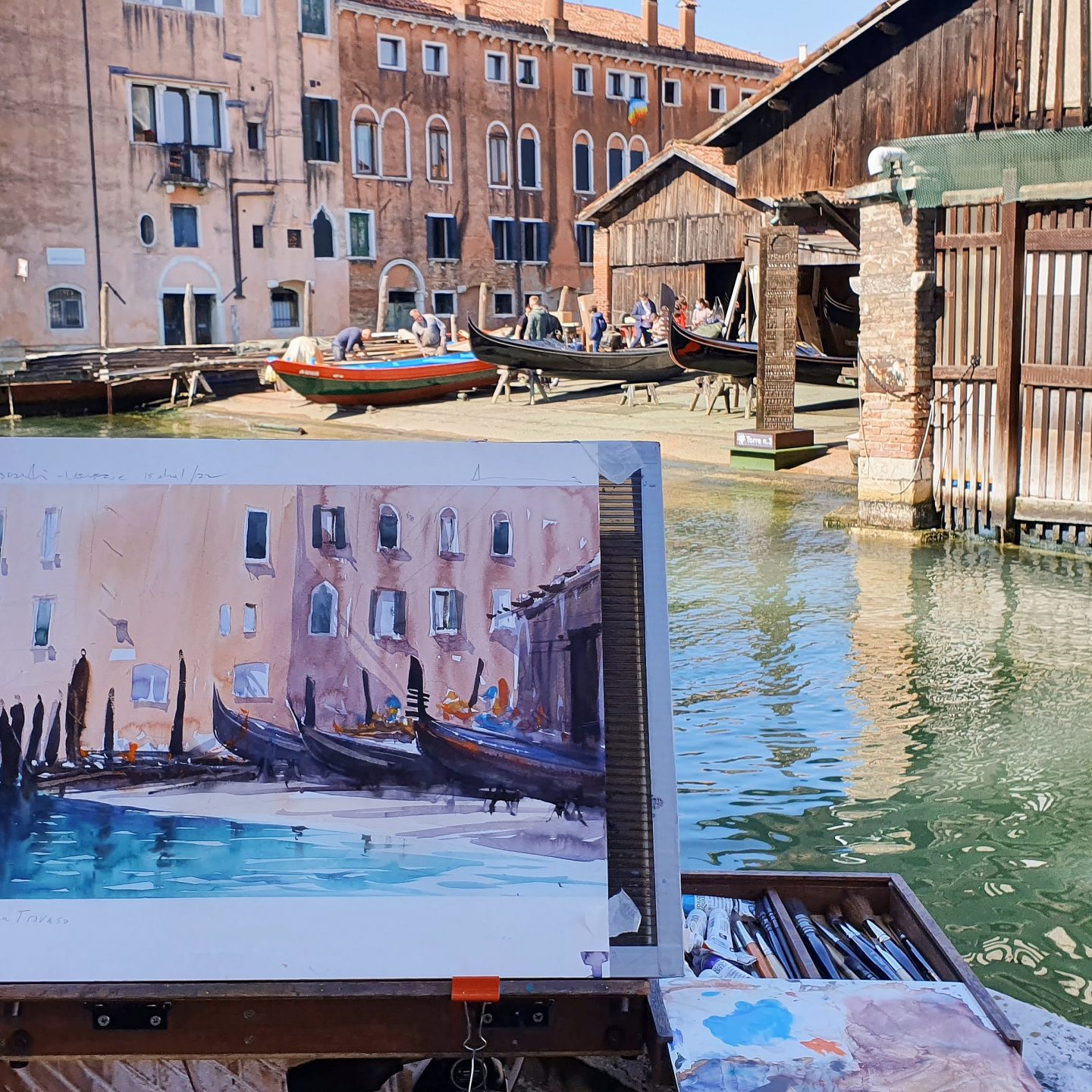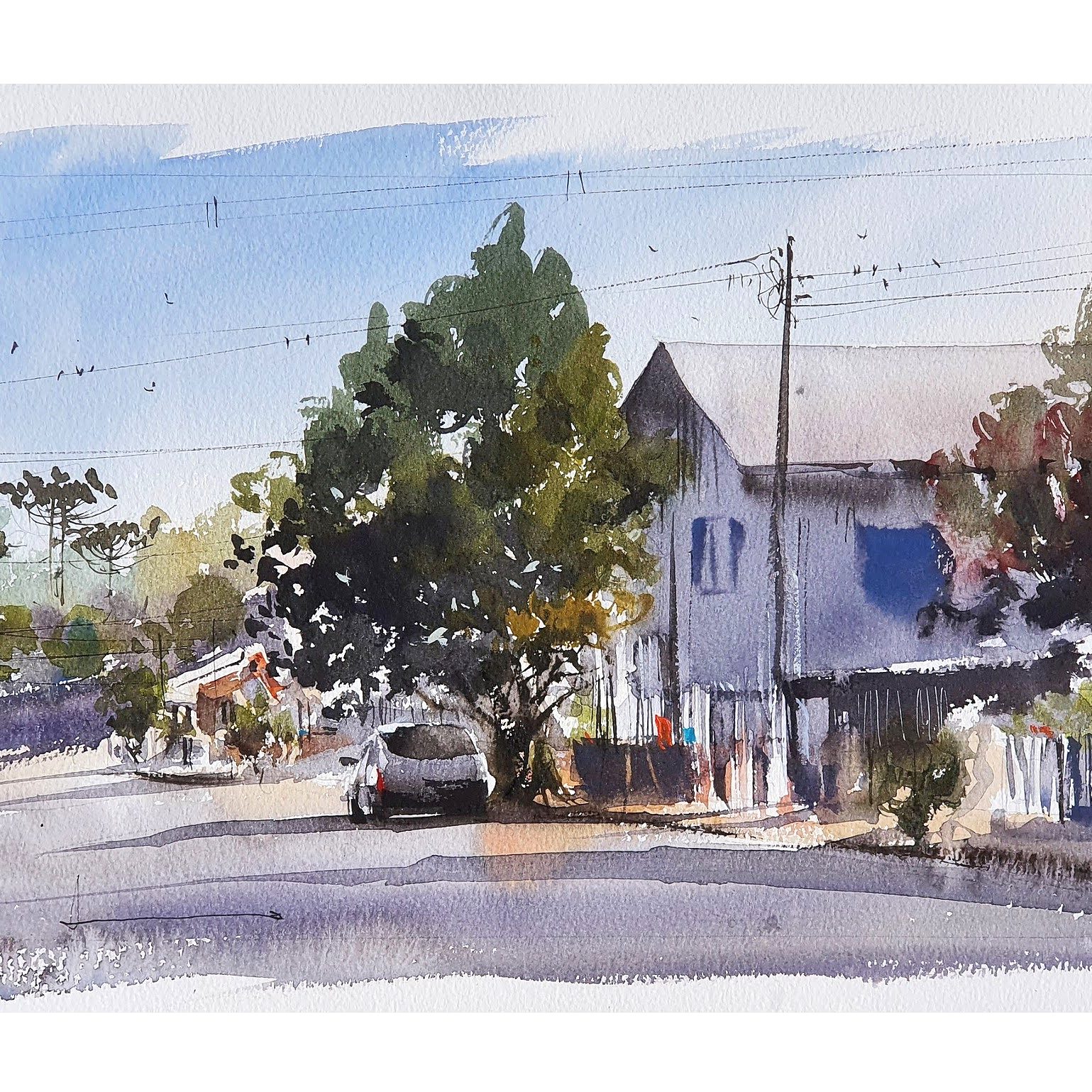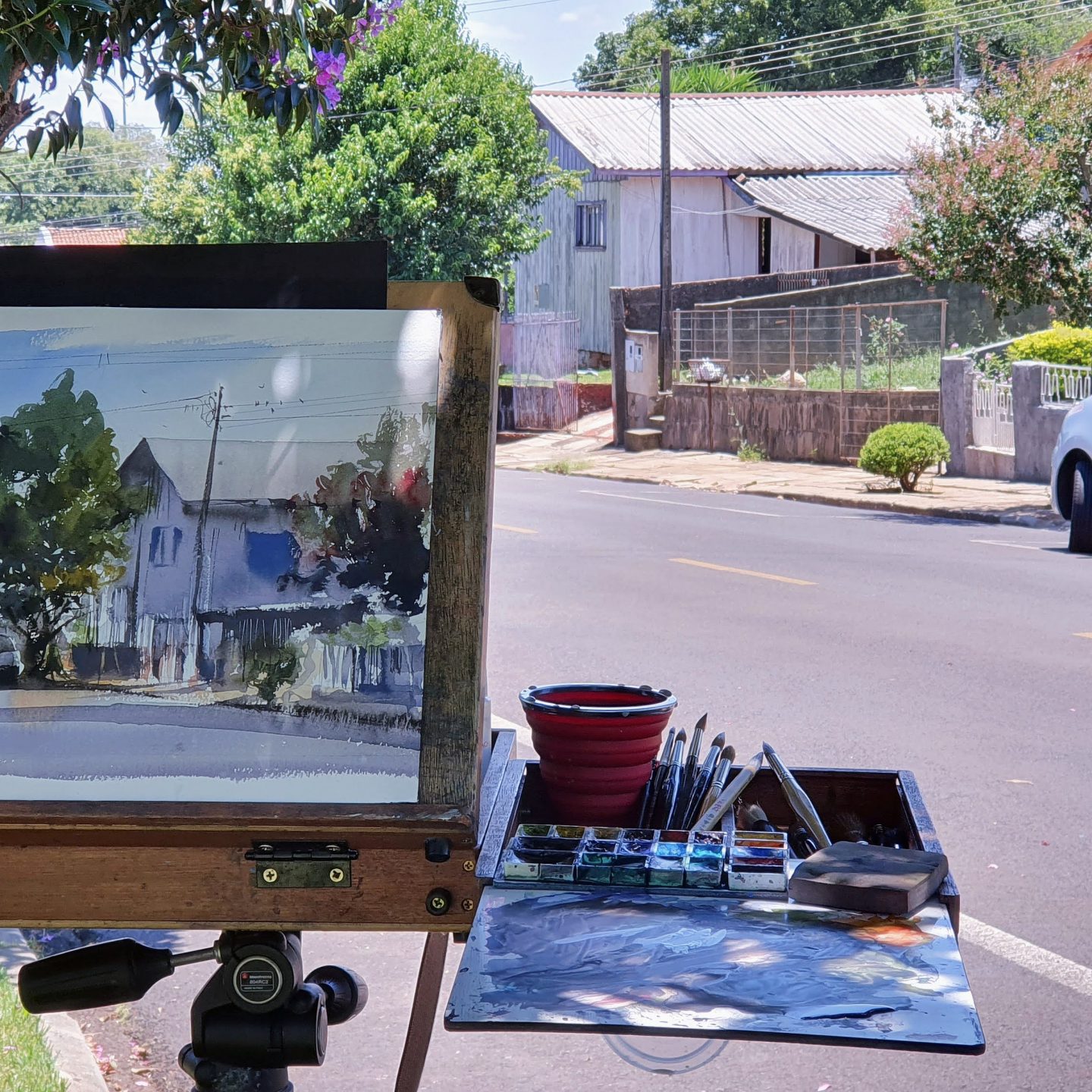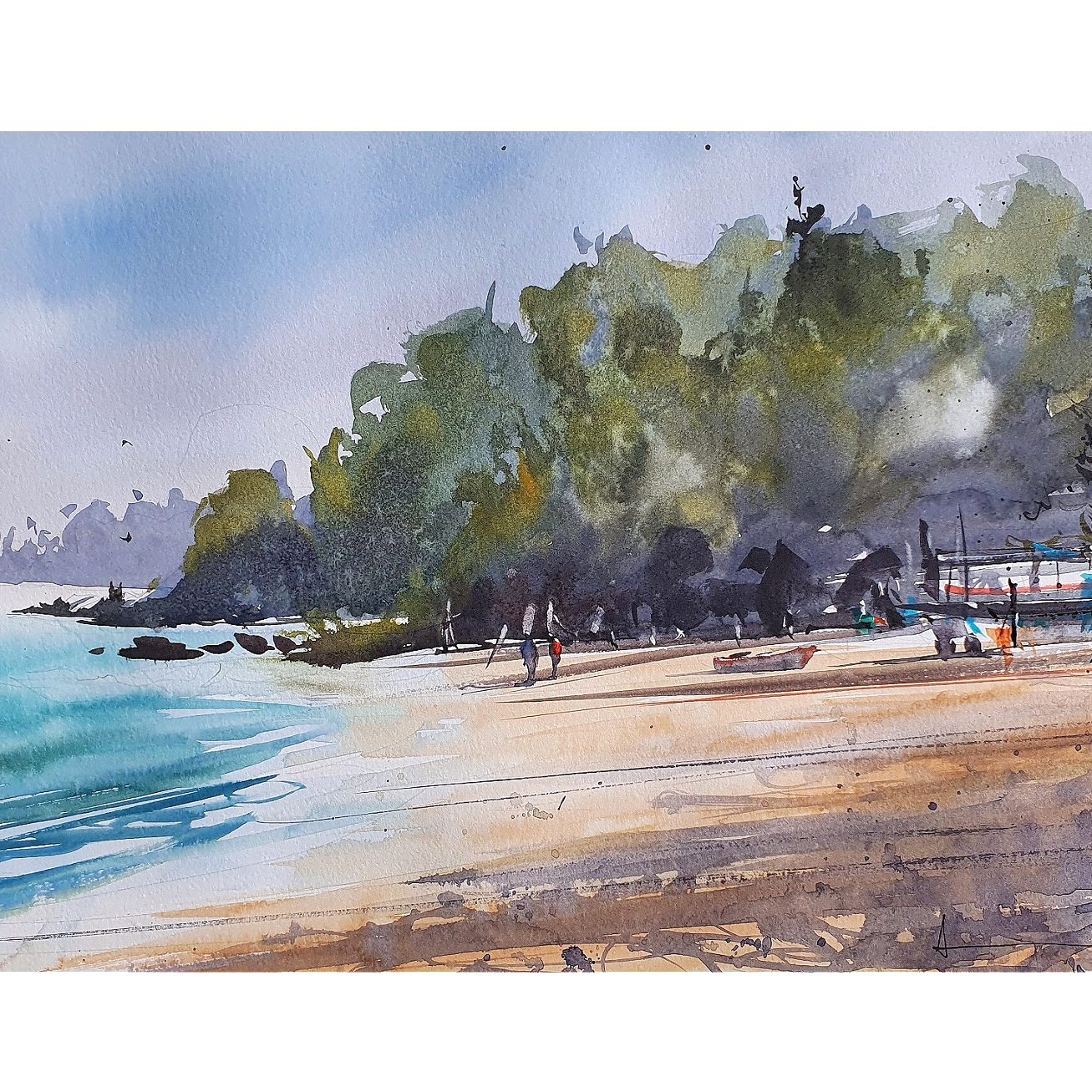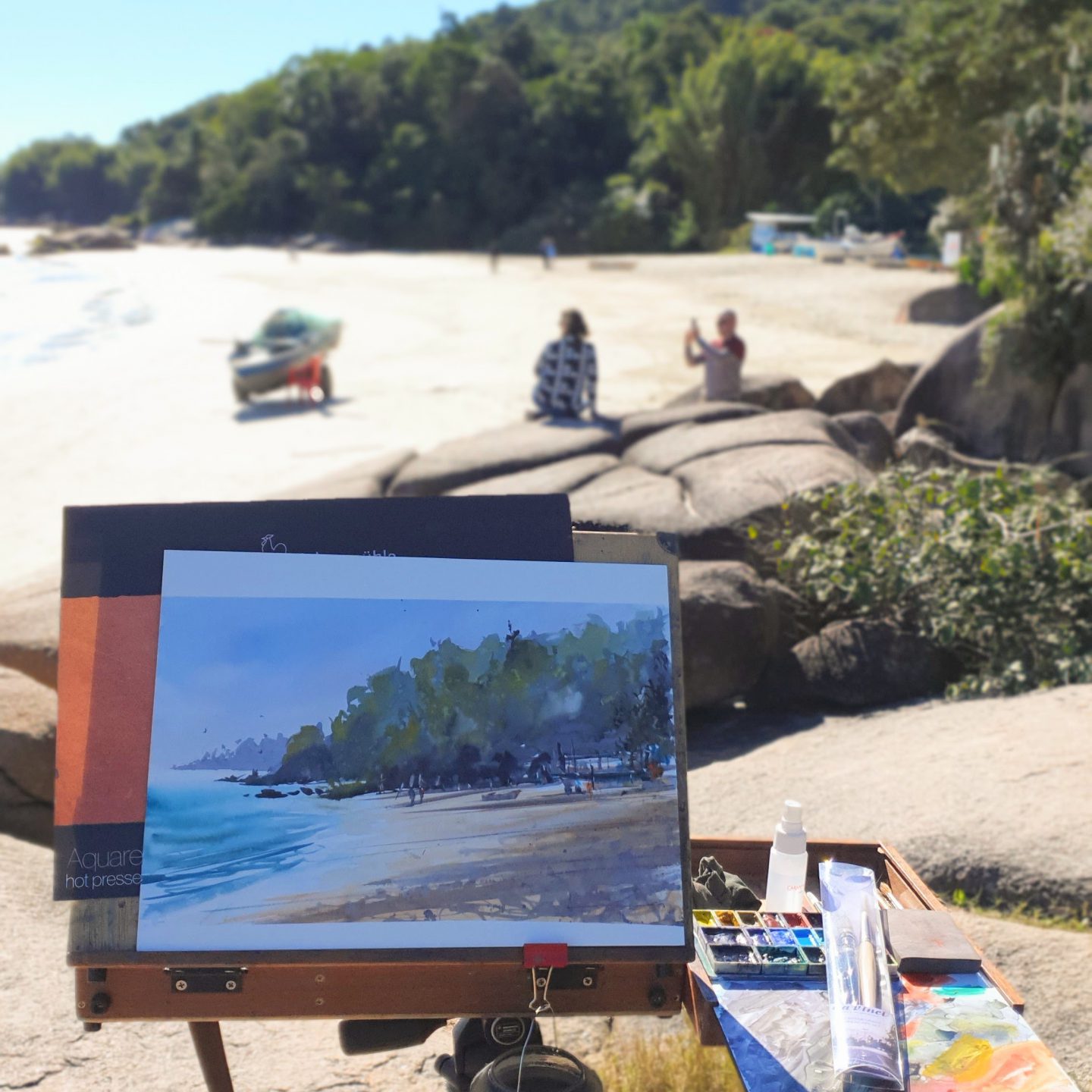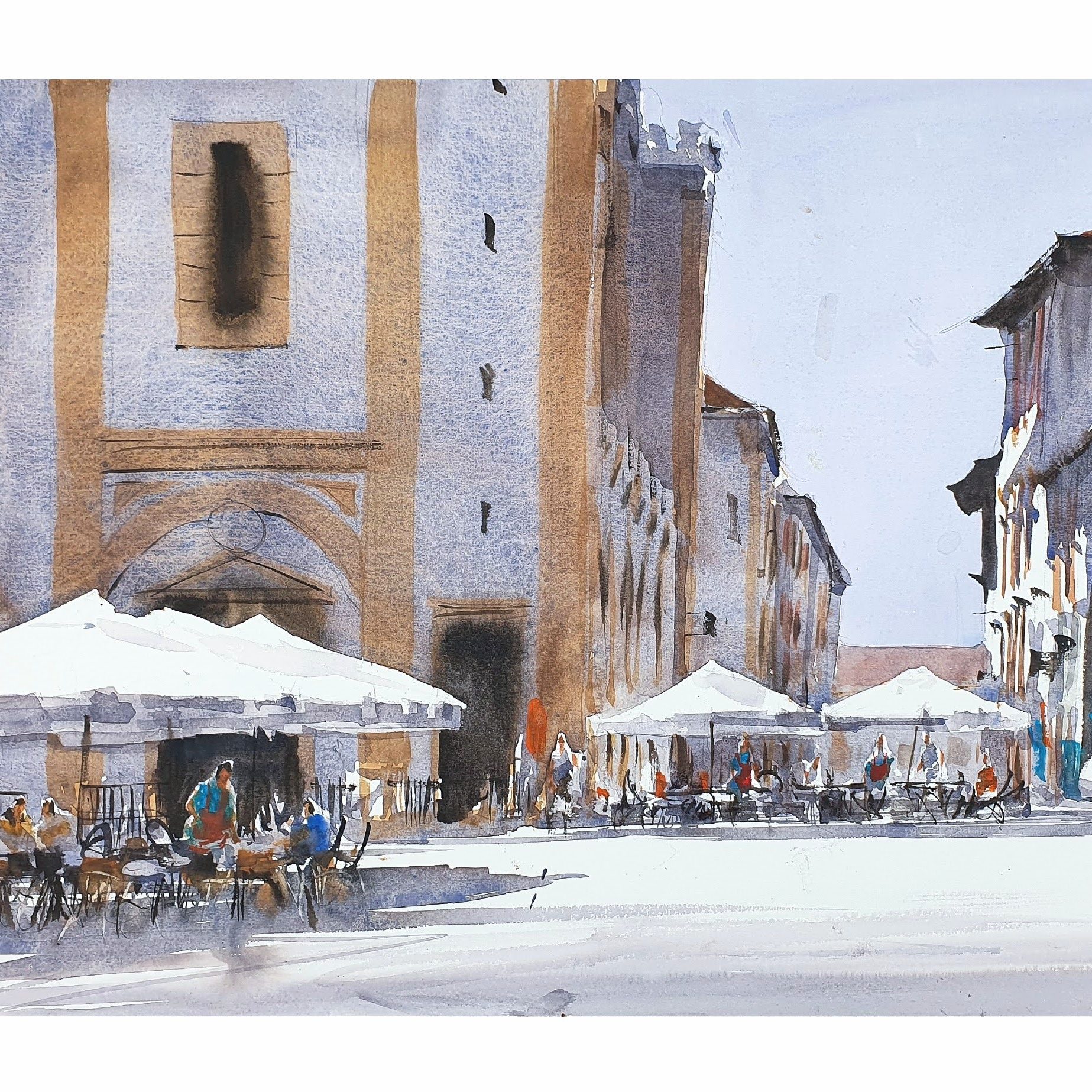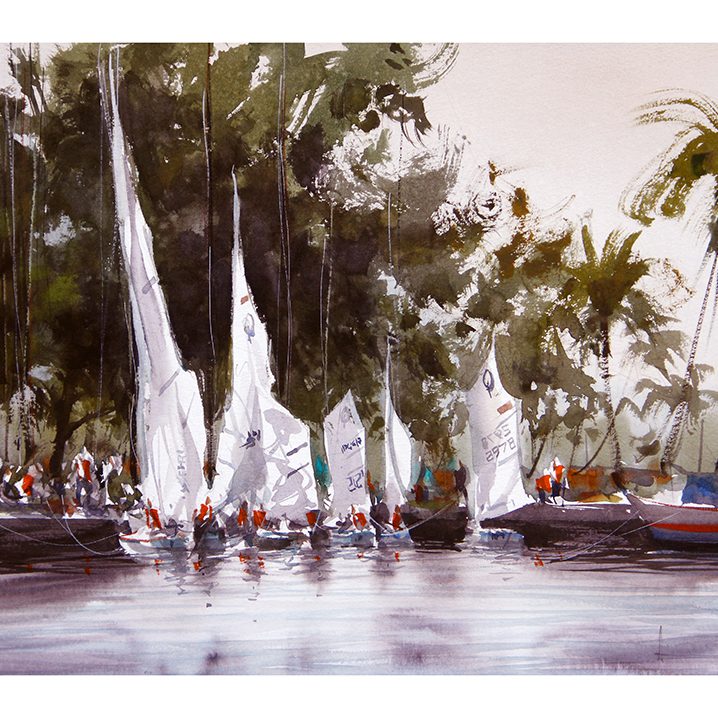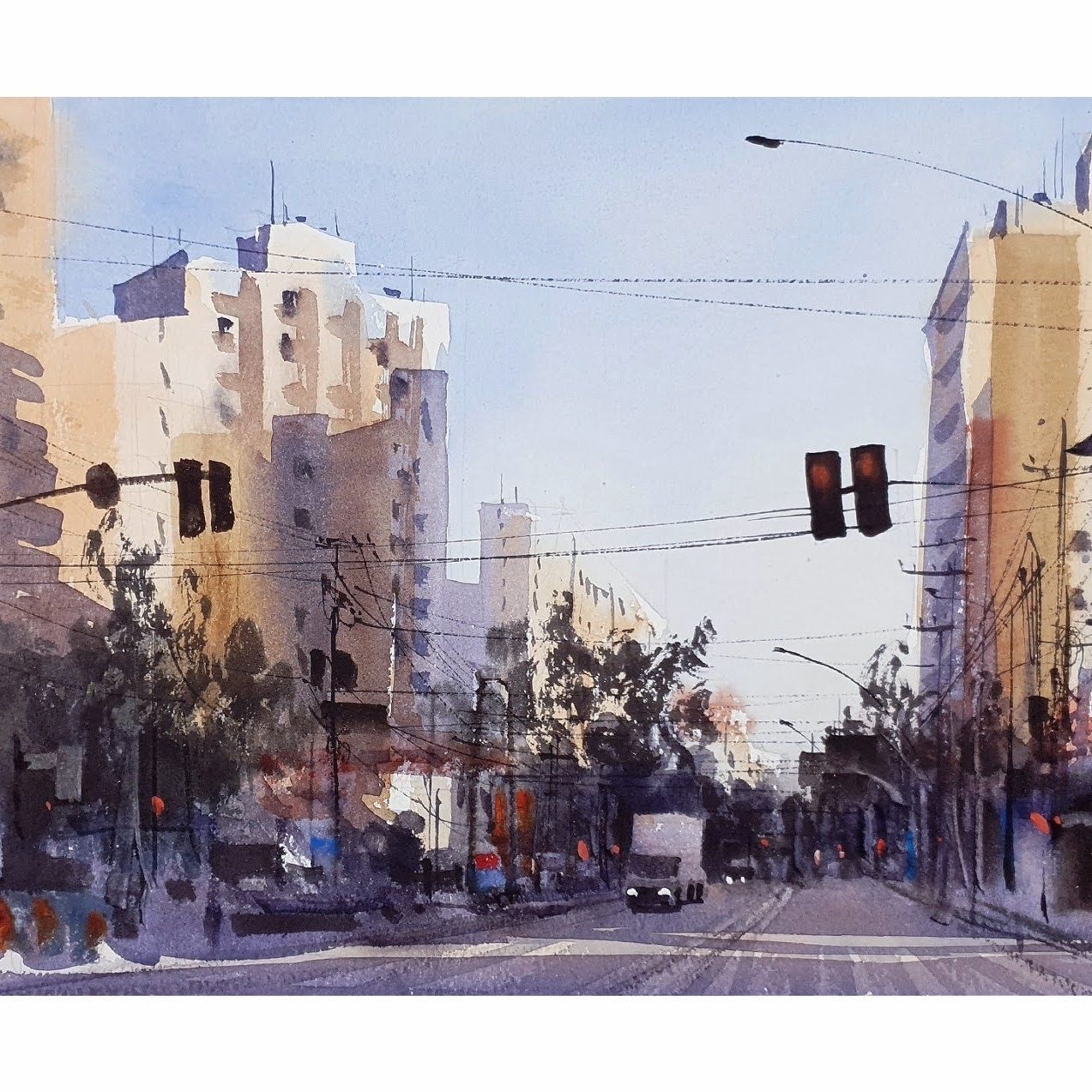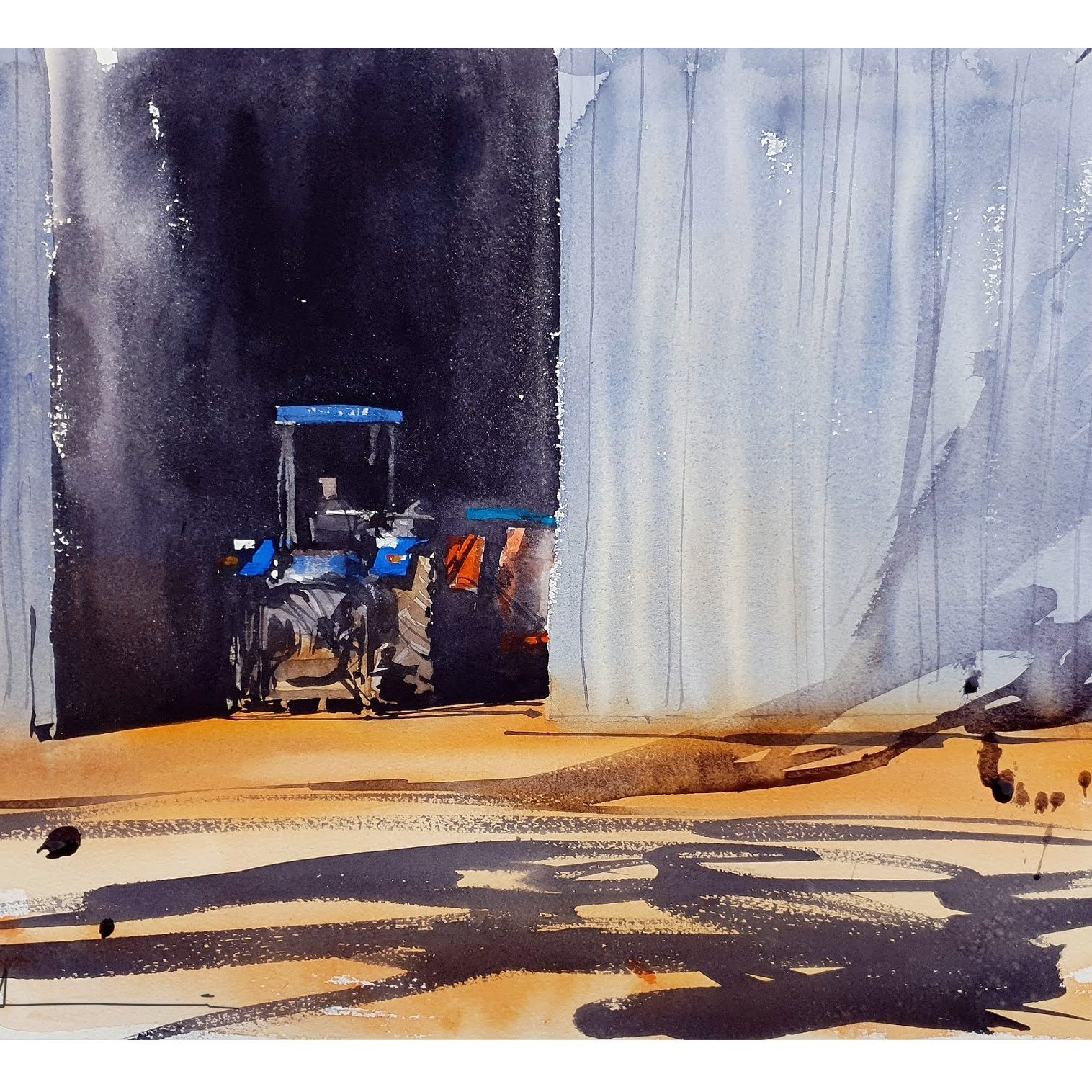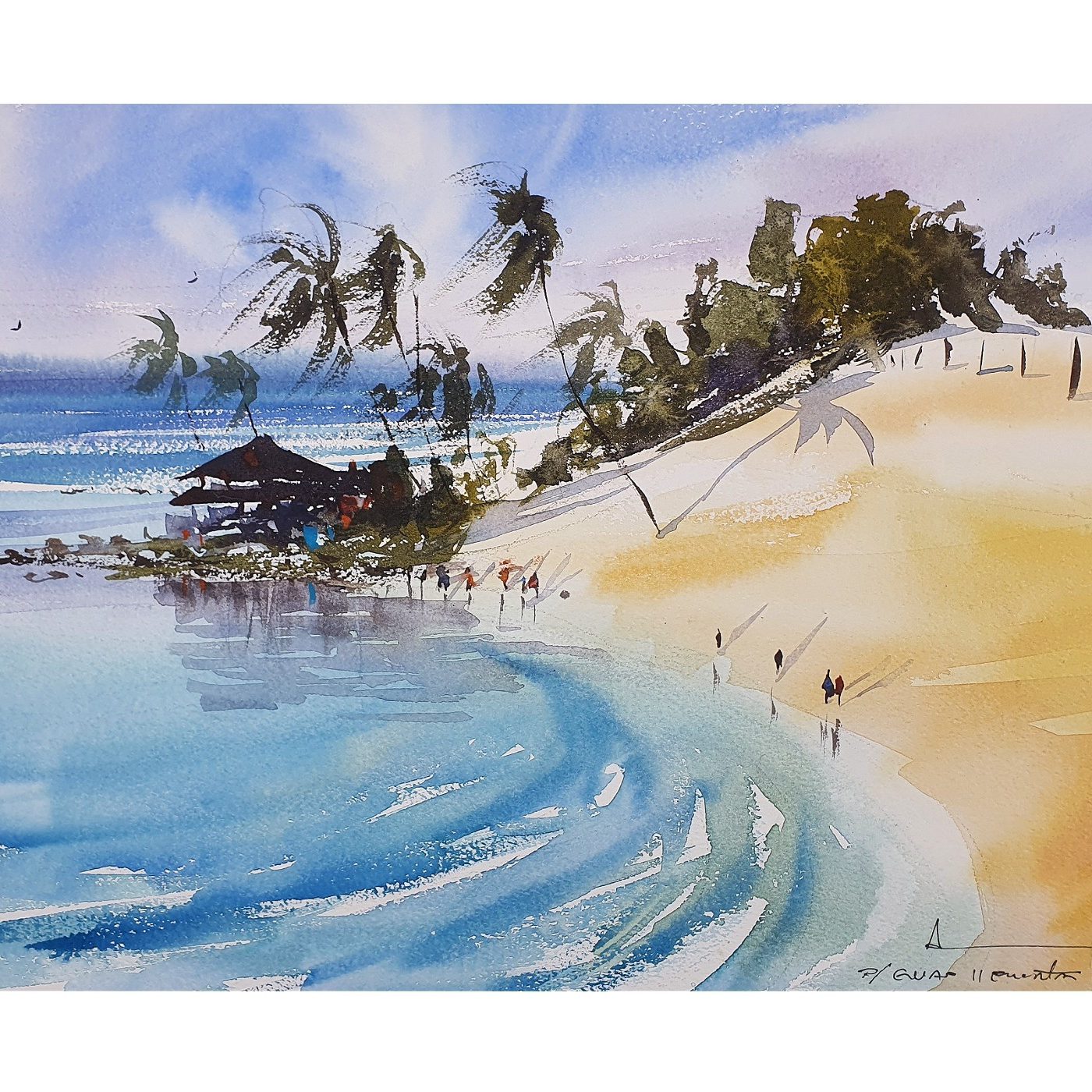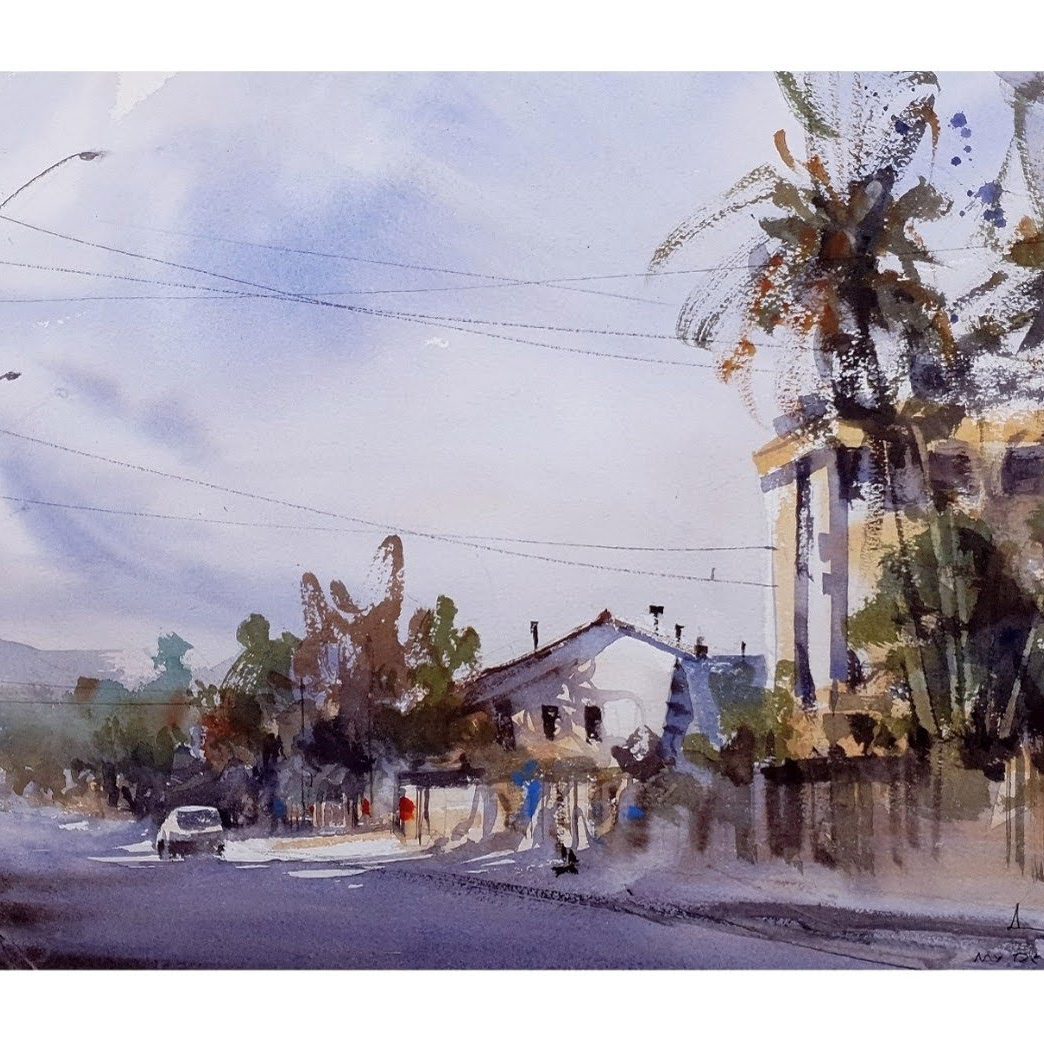Ari de Goes Jr is an artist from São Paulo, Brazil. His career began at the age of 14 as a layout artist for an advertising agency where he took commissions from clients. Over the years he has painted for many different magazines and national and international companies. He has gained a lot of experience in marketing and advertising and has been able to build up his own business. Over the years he has won several prizes and awards. Today, he is a very experienced professional plein air watercolourist and primarily leads outdoor courses and workshops for art enthusiasts.
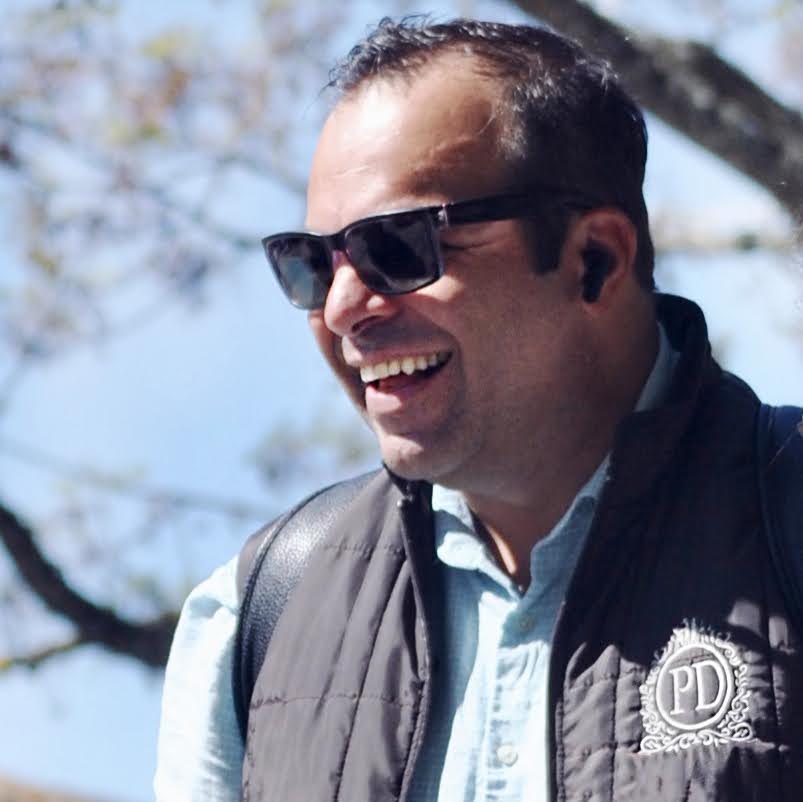
Were you always artistically talented or did you have to work hard for it?
I have always enjoyed practicing. I always liked to practice free drawing and the use of colors by using different techniques on paper. This life of practicing has given me the current ability in painting and drawing, a joyous endeavor. You must find enjoyment in the work itself then it will make the process of learning easier. I think talent is related to this enjoyment. I know that I have to work hard to keep my ability even if I’m talented. I see that those who practice constantly, have acquired greater ease in painting and drawing over the years. Constant practicing is the key.
Did you have a role model or a teacher who taught you everything?
Not really. Not a specific one. I had the opportunity to work with excellent professionals from different creative and communication areas. What formed me was the daily work with these professionals.
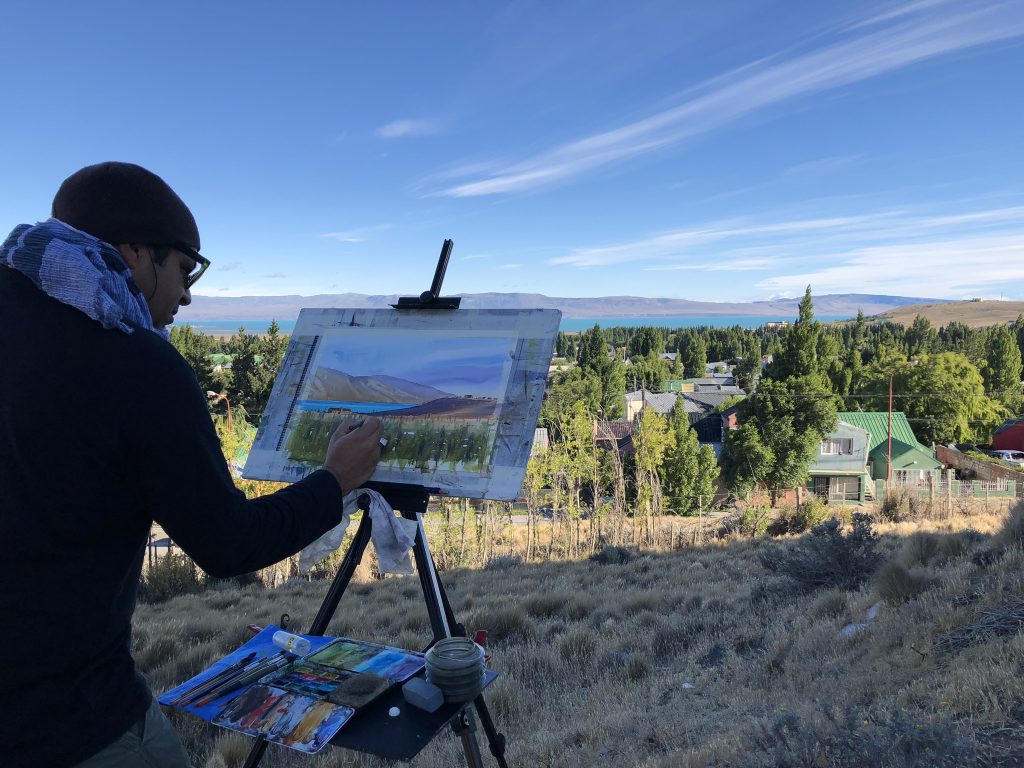
How did you go from being a layout designer to being a commercial artist and now a teacher for Plein Air watercolour painting?
With much suffering (laughs!) The transition of this cycle took me approximately 3 years. Between giving up a promising career in communication and discovering and finding a new path in arts, I went through many doubts, moments of dissatisfaction, revisions of concepts in life, changes in standards, crises with the closest people, and mainly detachment.
For such a change, it is necessary to rebuild your life and leave behind old things and values to gain and see new perspectives. This process is quite painful until you change the cycle and know that you are being honest with yourself. The feeling of freedom is rewarding and shows that it is the right way to go.
Why did you choose specifically outdoor watercolour and no other technique?
I didn’t have to worry about having a style when I worked producing layouts for clients and creative directors at agencies. I painted for clients’ orders and had to paint what the contractor chose. When I stopped painting or illustrating for commissions, I felt the freedom to choose my path. In the beginning, I had a lot of difficulties with this freedom, and I spent a few years trying to find and discover what I like to paint. I didn’t have an identity or style of my own at that time. I painted only for the need of others! I experimented with many techniques and approaches, explored different themes, and after looking everywhere, I found that the choice of my theme and style were pretty close. Don’t look for a style, the style will find you at the right time. I choose Watercolor as an artistic technique because it links to my characteristics: I like to be fast in the painting process, spontaneous and unpredictable, and the subject is linked to what I like to do most: traveling to different places, being outdoors, freedom and creativity in the process. That made me work with landscapes. Landscape Plein Air Painting chose me.
Do you have a special method for finding a suitable motif?
I learned from my practice that what attracts my attention the most, from the simplest and most discreet detail to something very strong and present, is an indication that it is the way this thing becomes a painting. After this subtle choice criteria, I take the next step of applying the technical tools of visual language and transforming this subject into a painting, that tells a story for the viewer.
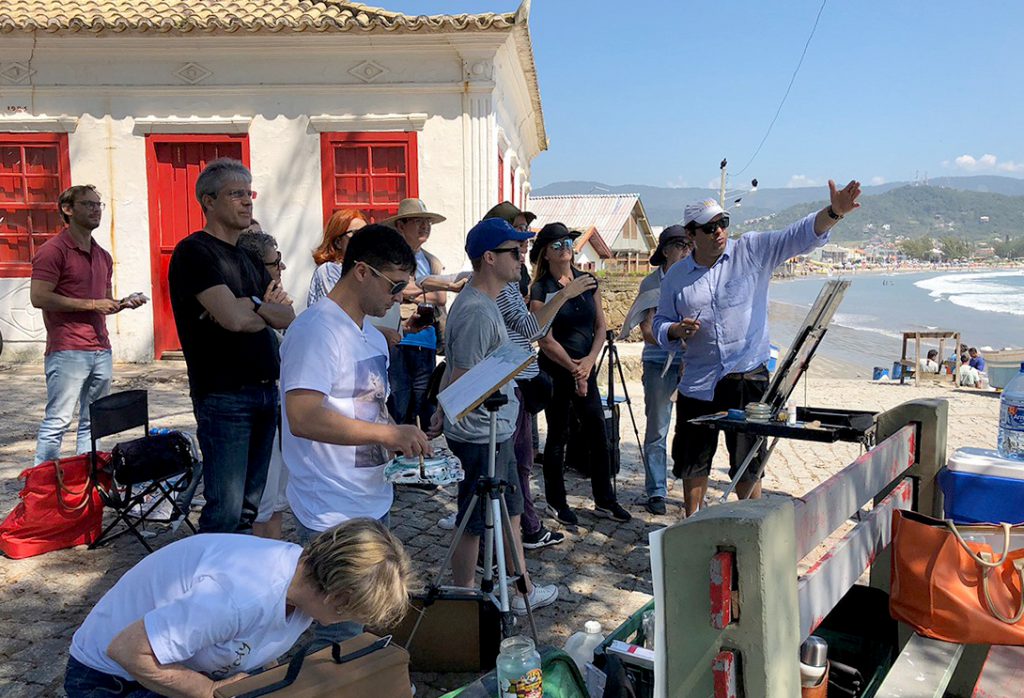
What inspired you to become a teacher and pass on some of your knowledge to beginners?
What inspires me the most to be a teacher today is being able to provide people with the ability to produce their own piece of art, in any place and in any situation, as a personal and original expression. During my years as an entrepreneur, I have mentored many people who have passed through my team. This act of mentoring turned me into an art and watercolour teacher when I started volunteering at an NGO for socially vulnerable children in Southern Brazil. I formed an initial group of 5 children that later became a group of 30 young people and teenagers. Along with that, I opened a watercolor class for the public and since then I teach for all audiences and ages.
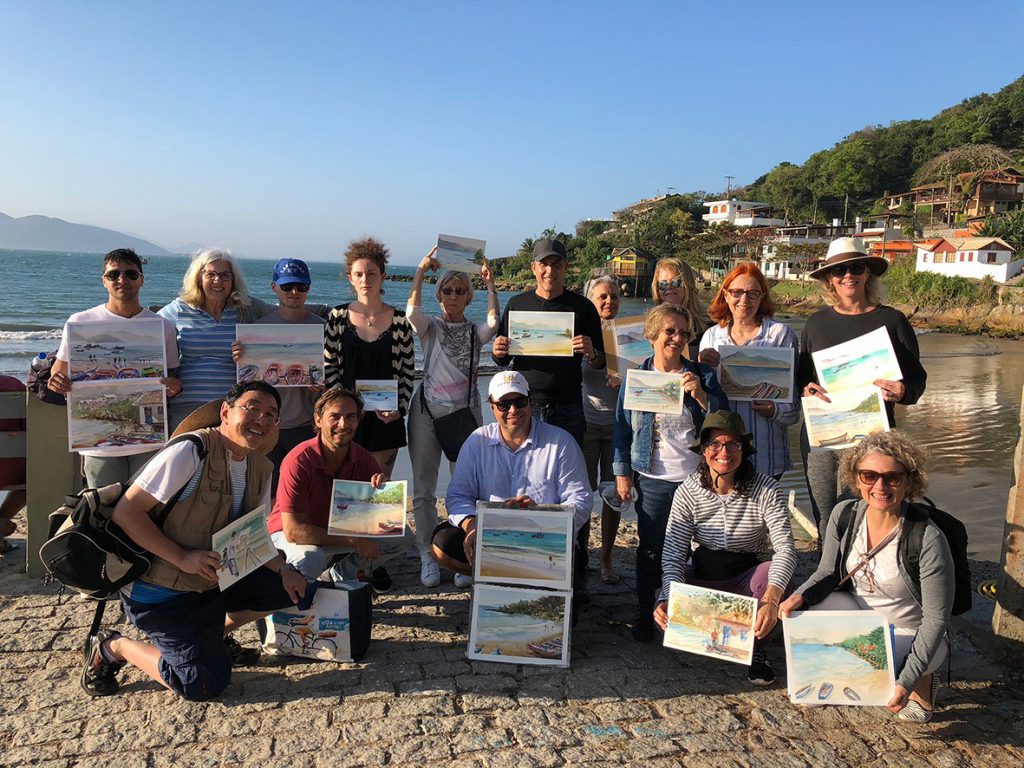
You offer courses and trips around the world in addition to Brazil. Are there differences in art scenes between countries?
Each region has different peculiarities in geography, vegetation, atmosphere, people, and customs. As a painter who seeks to represent the feeling and atmosphere of the place to be painted, it is very important to master and know how to use the material for the painting to adequately represent these differences. What kind of texture do you find in a desert or in a cityscape? You have to translate it properly and choosing the right paper texture helps you in this particular case. Some countries have a vegetation colour influenced by more blues and violets while other places, such as in the tropical region of the planet, have warmer vegetation, requiring the use of more yellow and red colors in the palette. Each location has peculiarities to be discovered by the painter’s eye.
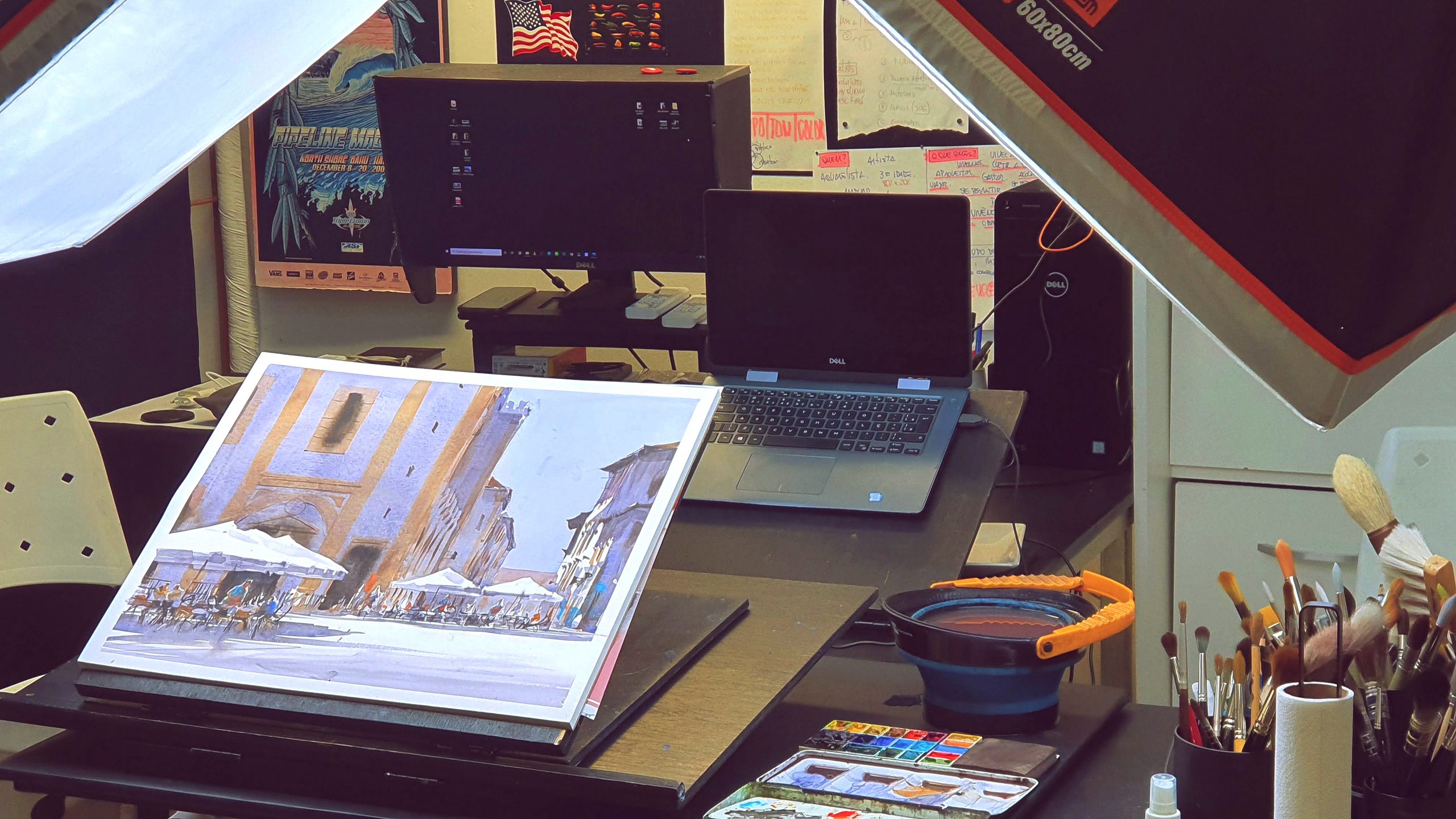
Has the pandemic had an impact on your work/business?
Definitely yes. I was already planning the possibility of remote classes and workshops beforehand. I had already acquired cameras, adequate lighting, and other equipment for this. In terms of online education, the pandemic advanced in two years a social change that could take 20 years. Today I am fully adapted, and online meetings are here to stay. Theoretical and practical content can be passed on perfectly and the student’s performance is 50% better in online classes compared to face-to-face classes where there is a lot of distraction. I currently teach classes on this system to students all over the world, from live and online classes to recorded classes on Art teaching platforms. The face-to-face classes still exist today and are more advanced in content. This is where we teach painting outdoors with students.
What does winning the Aldir Blanc Cultural Trajectory Recognition Award mean to you?
It represents an important recognition of my work by the Society since it is selected and approved by public depts that represent Art and Culture in my country.
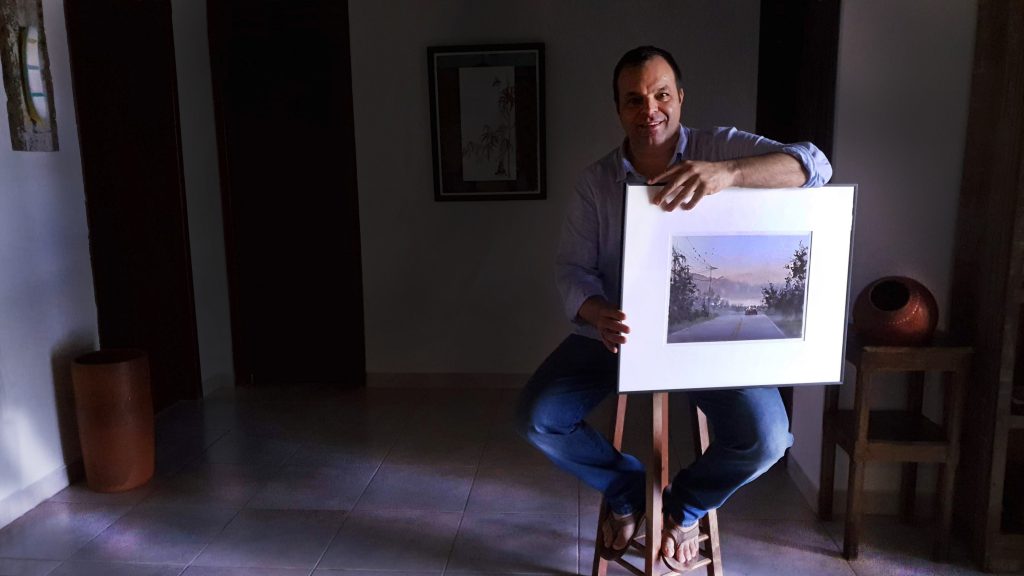
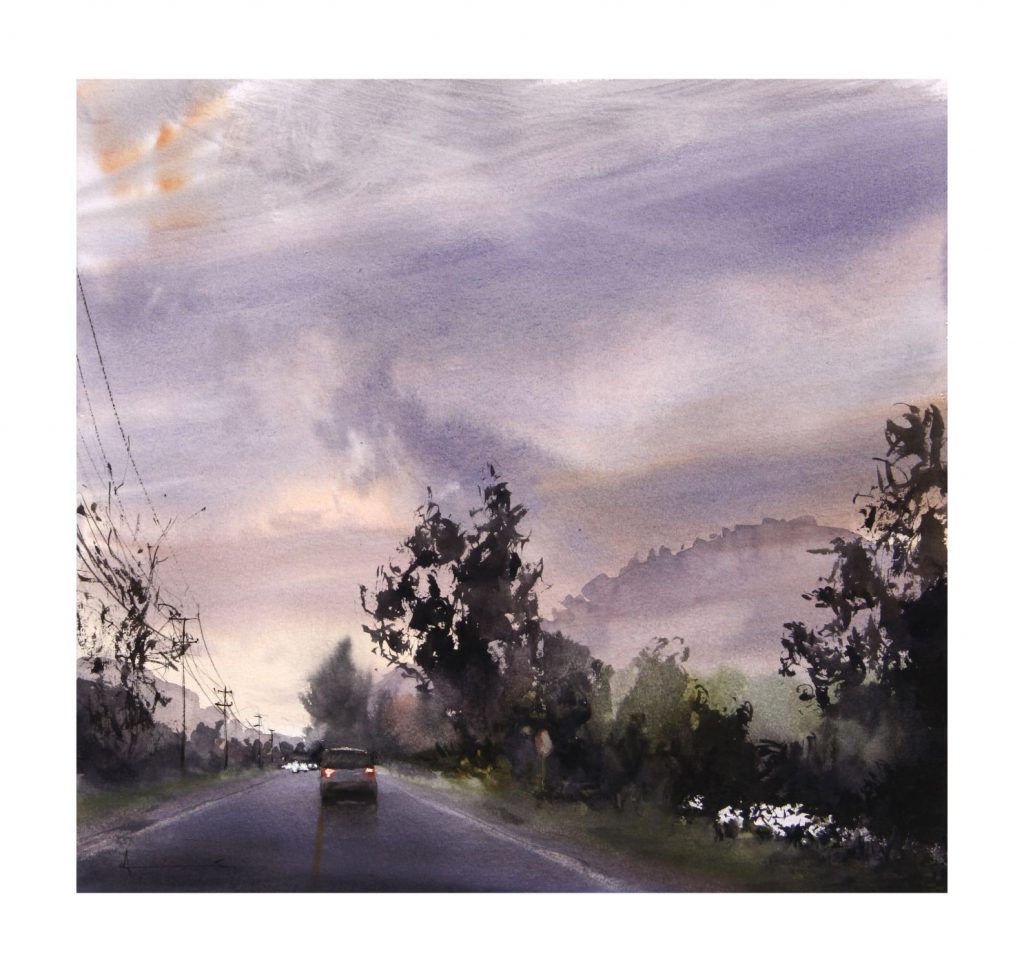
Why did you choose Hahnemühle papers for your work?
I work with the highest quality in all stages, from creation to execution. The paper, in my opinion, is the base, the “stage” where everything happens with watercolor. It is essential to have the right answer of what you are looking for on this surface, the paper needs to answer exactly what you idealized in your planning in terms of texture, sophistication in the edges and brush strokes. The use of Hahnnemühle paper always guarantees this answer to me.
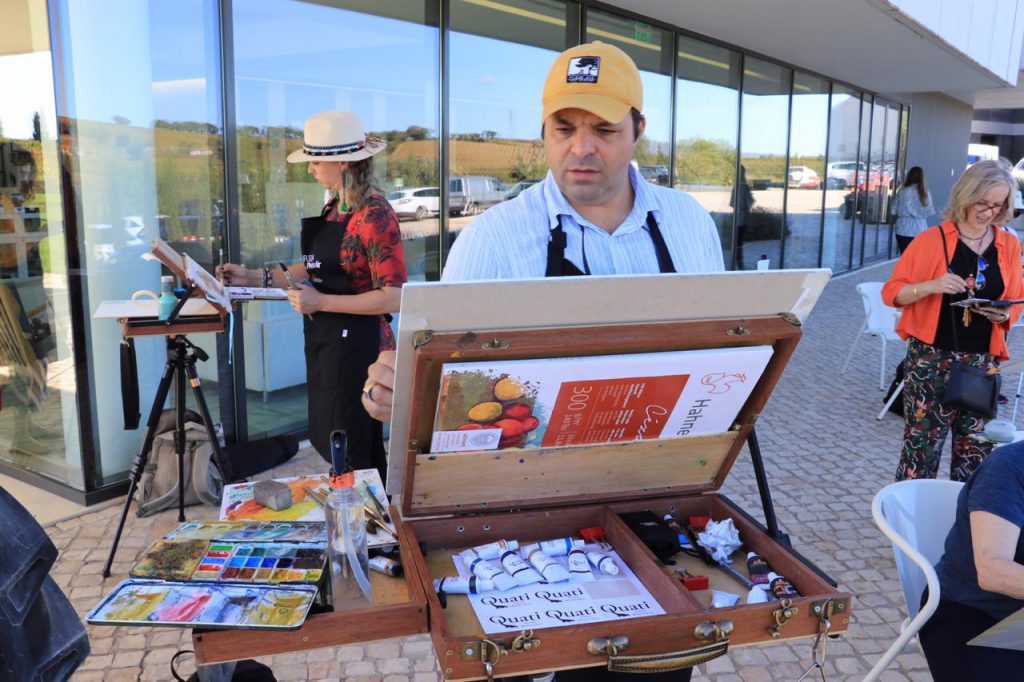
Which Hahnemühle paper do you like the most and why?
I have a way to classify watercolor papers into two types: fast papers and slow papers. I choose one or another just according to how I want to interpret the scene. I use The Collection Watercolour rough and cold pressed for the most elaborate paintings with a higher volume of water. I use The Collection Watercolour hot pressed and Expression for a faster, less water-intensive approach to the process. I use Bamboo Mixed Media and Britannia for experimentation, painting plans, and classroom exercises. I still have the Sketch Book 120 gsm and the Watercolor Book as inseparable materials in my Sketching kit for daily practice.
Do you have any plans to expand your area of expertise in the future, or maybe even go in a new direction, as you have done in the past?
I have many plans for the future and they are about continuing to create means and opportunities for experimentation and learning for watercolor artists and creative people. I believe in good coexistence and interrelationship between students, teachers, artists, and serious brands that produce professional products for the market. Any new direction that I take in life from now will be linked to Art, creativity, and the act of teaching and promoting painting with Watercolor and water-based techniques.
Do you have any advice for anyone reading this who is interested in learning the outdoor watercolour technique?
Practise, every day, in any situation. Study hard or choose someone to introduce you in the correct way and thus avoid vices that are difficult to remove. Planning to go out painting is different from going out to actually paint. Good paintings start with good planning. You have to have your painting done in your mind before getting into the materials. 10 minutes of the correct eye is time enough to paint anything as a painting plan. So, grab your sketching or painting gears, go out, breathe the fresh air, capture the movement of things, experience the painting, have fun and record the moments around you in a beautiful painting.



